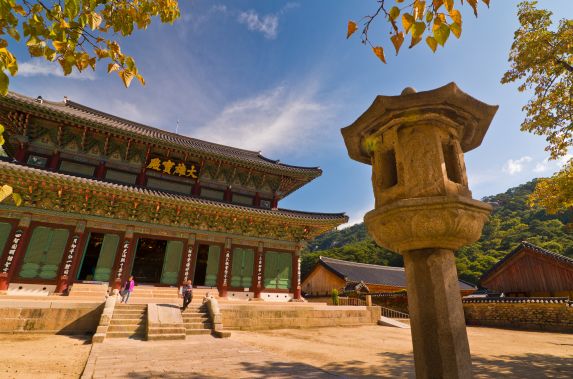Gyeongju was once the capital of the ancient kingdom of Silla that ruled about two-thirds of the Korean Peninsula between the 7th and 9th centuries. The city is incredibly rich in history, with plenty of treasures to explore. I arrived in Gyeongju and instantly noticed, while in the taxi to my guesthouse, how flat everything is. Gyeongju is probably one of few cities in Korea that hasn’t been overrun with high rises. I’m used to seeing huge apartment buildings when I go into cities, but not here. That was the first sign that I was going to enjoy my time in this city.
1. Bulguksa Temple / 불국사
About half an hour away from Gyeongju Station lies Bulguksa Temple. It is one of the most popular tourist sights in Gyeongju and is a masterpiece of the golden age of Buddhist art in the Silla kingdom. The grounds look beautiful with the bright autumn leaves shadowing the temple. The temple complex is big, with lots to see, although my personal favorite was the pond that welcomed you just before the temples. It gets incredibly busy here during the day, so I'd recommend coming super early in the morning. Seokguram Grotto, listed with Bulguksa Temple on the UNESCO World Heritage List, lies 4000 meters to the east. The Seokguram Grotto contains a monumental statue of the Buddha looking at the sea in the bhumisparsha mudra position. The number 12 bus, outside the front entrance of Bulguksa Temple, takes you straight there. Proceed with caution though, because we waited over an hour for the bus and it never came, then got thrown out of a taxi that refused to drive us there unless we paid 20,000 KRW (not happening). In the end, we managed to get to the grotto with a friendly taxi driver who only charged us 10,000 KRW. However,, once we got there, not only was it super crowded — it was also under construction and not at all like the beautiful, peaceful grotto I was expecting. Huge disappointment.
Entrance fee: 4000 KRW (Adults)
2. Daereungwon Tomb Complex / 대릉원 - 천마총
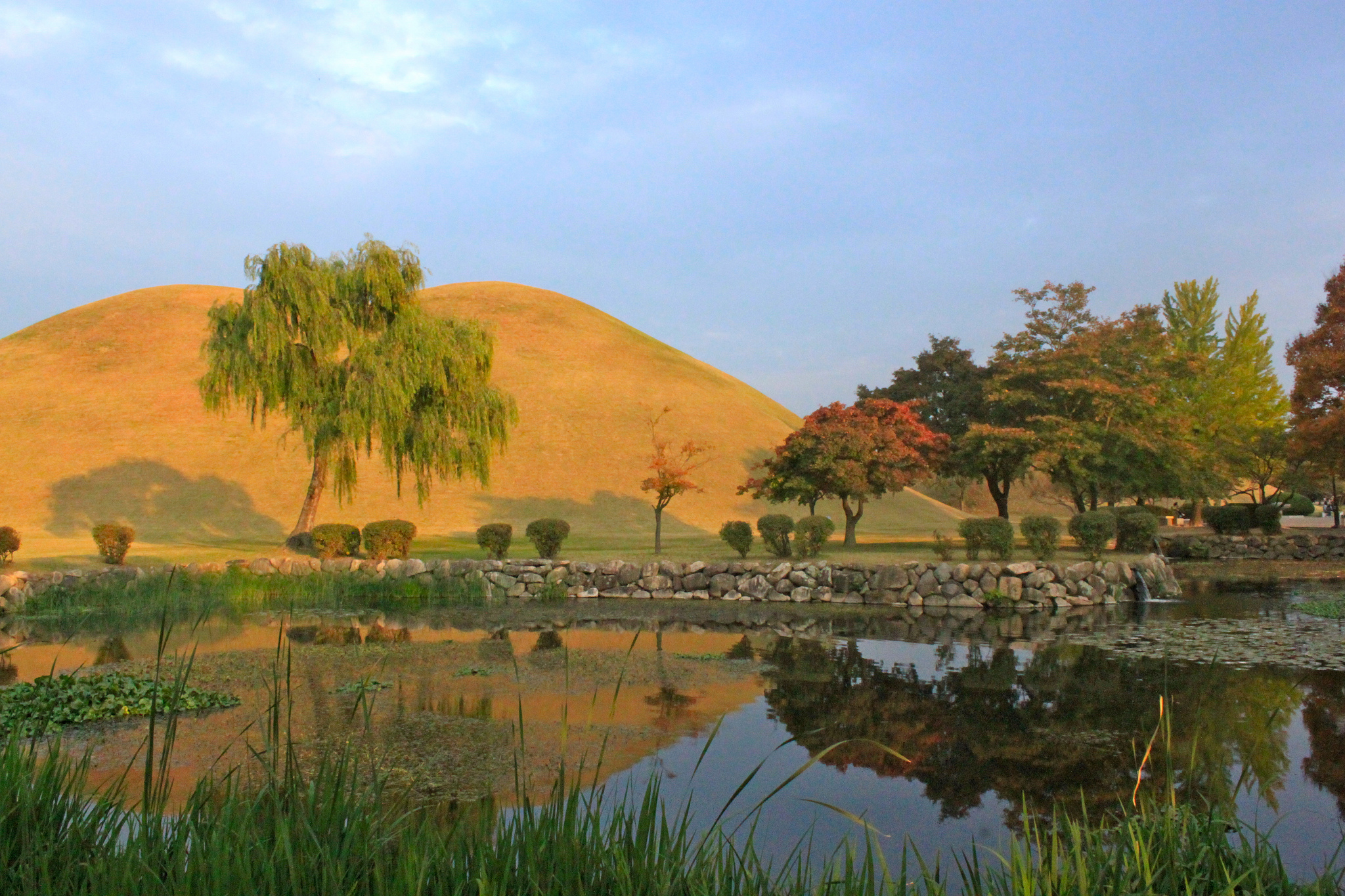
When you get to Gyeongju, especially downtown, you can't help but notice these huge, steep domes everywhere you go. They're actually tombs of kings and noblemen of the Silla Dynasty, buried in the most unique way I've ever seen, and often compared with the pyramids of Giza, although not nearly as grand (It's like comparing Jeju Island to Hawaii). Daereungwon Tomb Complex is the most popular in downtown Gyeongju. It includes Cheonmachong and Hwangnamdaechong, which houses the bodies of kings and queens and thousands of gold accessories. The tombs are very well kept, and are very appealing to the eyes. It reminded me of the Chocolate Hills Complex of Bohol, Philippines, except of course, these are manmade. The grass growing over it was kept short and neat, huge trees are often seen coming off on the side of the dome, giving it a unique look.
Entrance fee: 1500 KRW
3. Anap Pond / 안압지
Anapji, or Anap Pond, is an artificial pond in Gyeongju National Park. It's also one of the many "top things" to do and see in Gyeongju. It was part of a palace complex of ancient Silla, constructed by order of King Munmu. I'd seen so many photographs of this pond and thought it looked amazing. I was picturing a beautiful pond full of little creatures, water plants with grass surrounding it. Little did I know, it was an artificial pond rebuilt in 1974, and it was super busy. Staff at the guesthouse that I stayed at had recommended coming to Anap Pond at night because it's more beautiful, but he failed to tell me how many other people were going to have that same idea. Beautiful, but very, very busy.
Entrance fee: 1500 KRW
4. Golden Buddha Temple
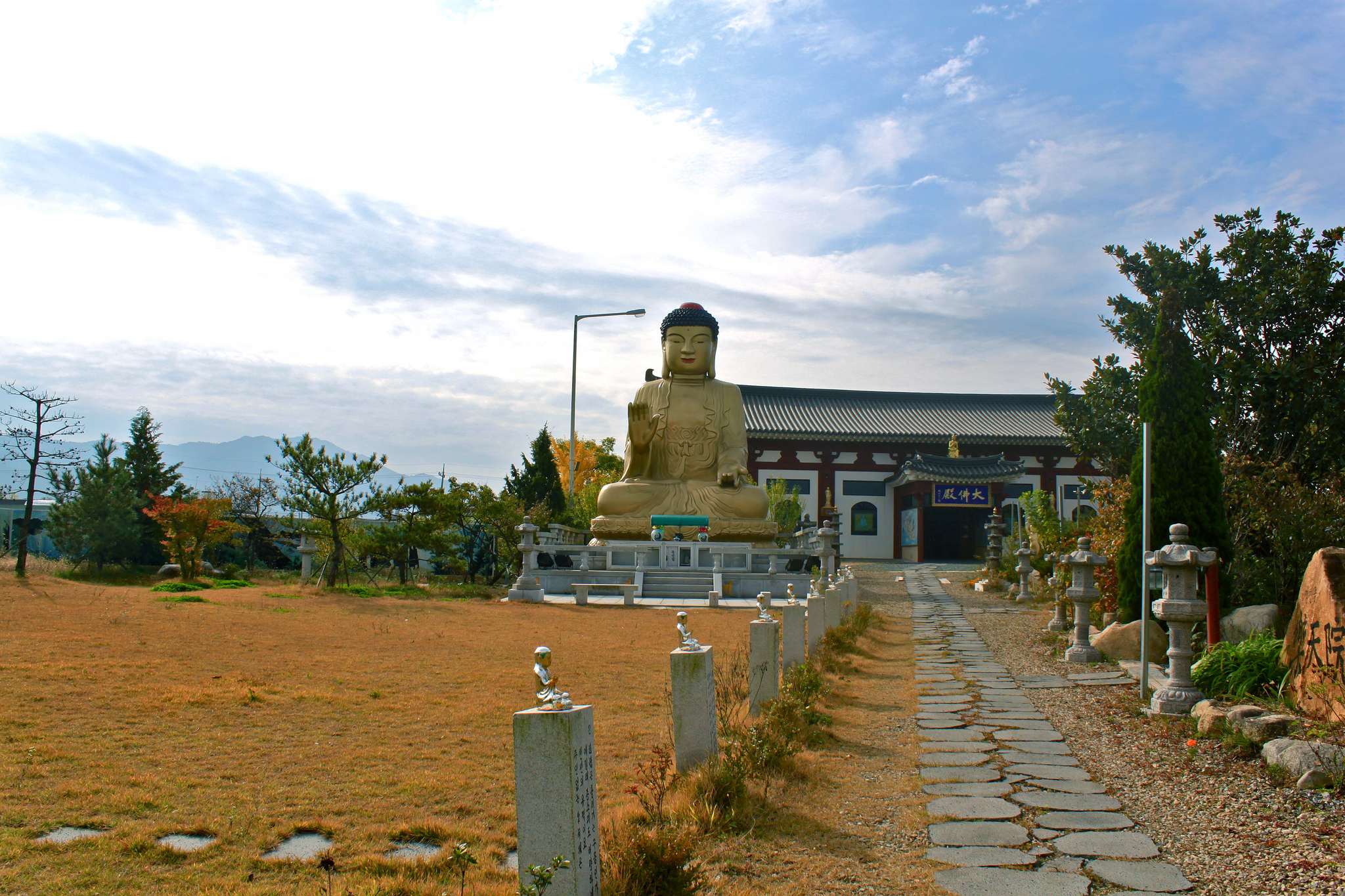
We randomly found this huge seated golden Buddha while we were riding around on our bikes. Since then, I haven't been able to find much information about the temple at all, mainly because it's only two years old. I jotted down a name, 낙천원사 (Nakcheonwonsa), but I'm not 100% sure of my note taking. It's located in Gyo-Dong, just across the Namecheon River. It was quiet, with nobody there at all, making it very peaceful. I always imagined that most temples in Gyeongju would be like this; very quiet and serene because of its close connection with Buddhism. There was the smell of incense in the air, and little slippers and floor pillows laid out in the temple if you wanted to go inside and pray. Other than the Buddha and the temple, there wasn't much else around, just a few little statues scattered here and there. Inside the temple are five large golden statues of different Buddhist Gods. The temple was apparently founded by a Korean-Japanese woman who recently moved back to Japan as part of a reconciliation for the Japanese occupation in Korea. Well worth a little visit if you pass by.
5. Taking in all the glory of Gyeongju in autumn on a bicycle!

I'm so glad we came to Gyeongju this weekend because the autumn leaves just looked stunning. Everywhere we went we were faced with beautiful bright reds, yellows, and orange leaves. It gave everything we saw that little extra bit of beauty. Riding around on our bikes in the cool autumn air was so perfect: the sun was shining, the sky was blue, and we weren't sweating ridiculously (like we would if it was summer). Gyeongju has many parks and small "forests," where you can hear the crunching of the leaves as you go by. The best part for me was riding around, sightseeing, and not seeing a single high rise. Just tombs, mountains and countryside everywhere we went. Gyeongju is definitely one of my favourite places in Korea. You feel the spirituality and peacefulness in the city when you explore, especially when you pass through villages and farmland that has been well preserved. The city has a deep connection with Buddhism, and it's something you can definitely see and feel when you wander around.

Getting to Gyeongju From Geoje, you have to take a bus to Busan. When you get to Sasang Bus Terminal, you have to get to the Express Bus Terminal in Nopo (55 mins plus one transfer), from the Express Bus Terminal, you get a straight bus to Gyeongju which takes about 45 minutes.
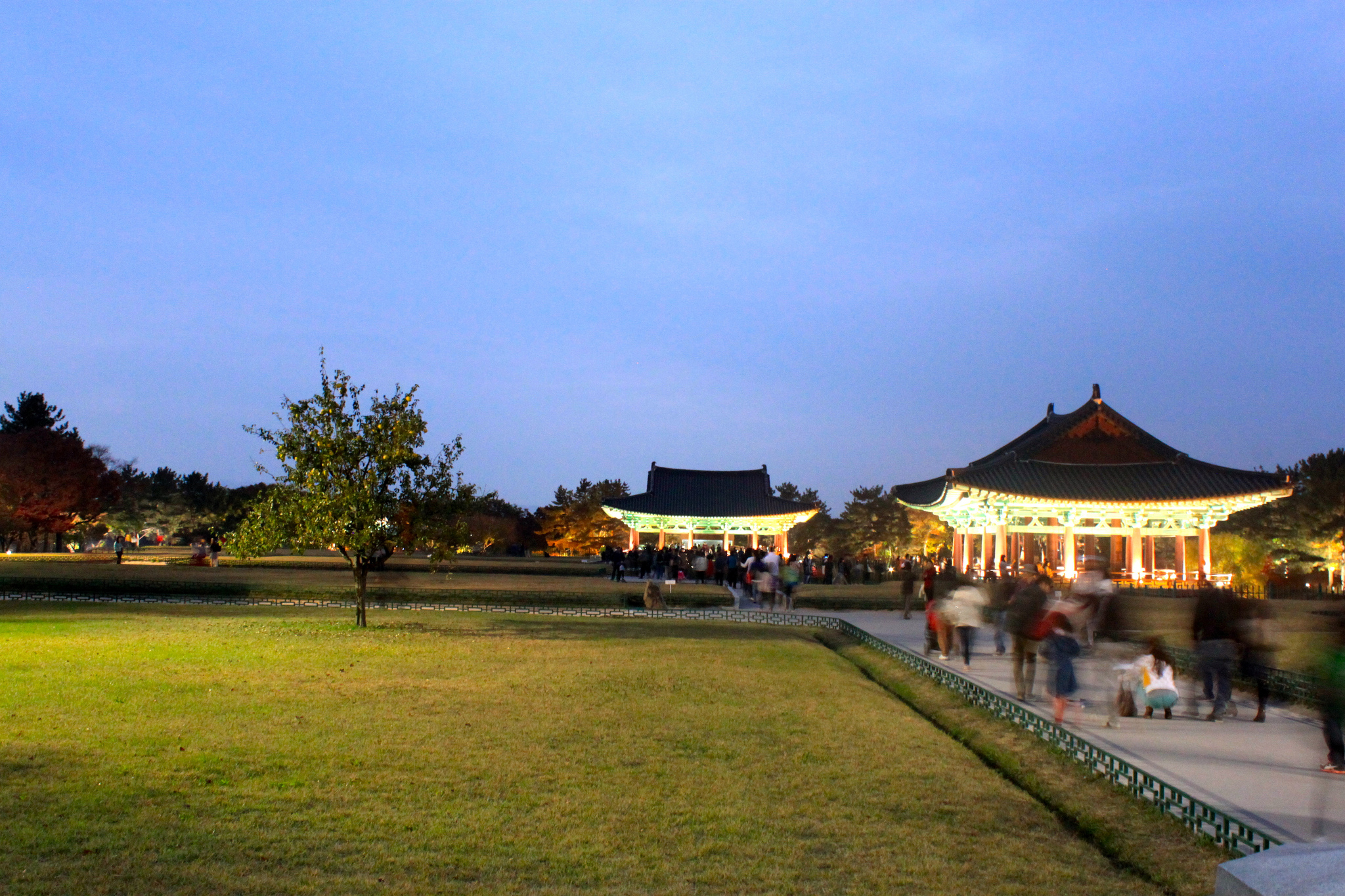
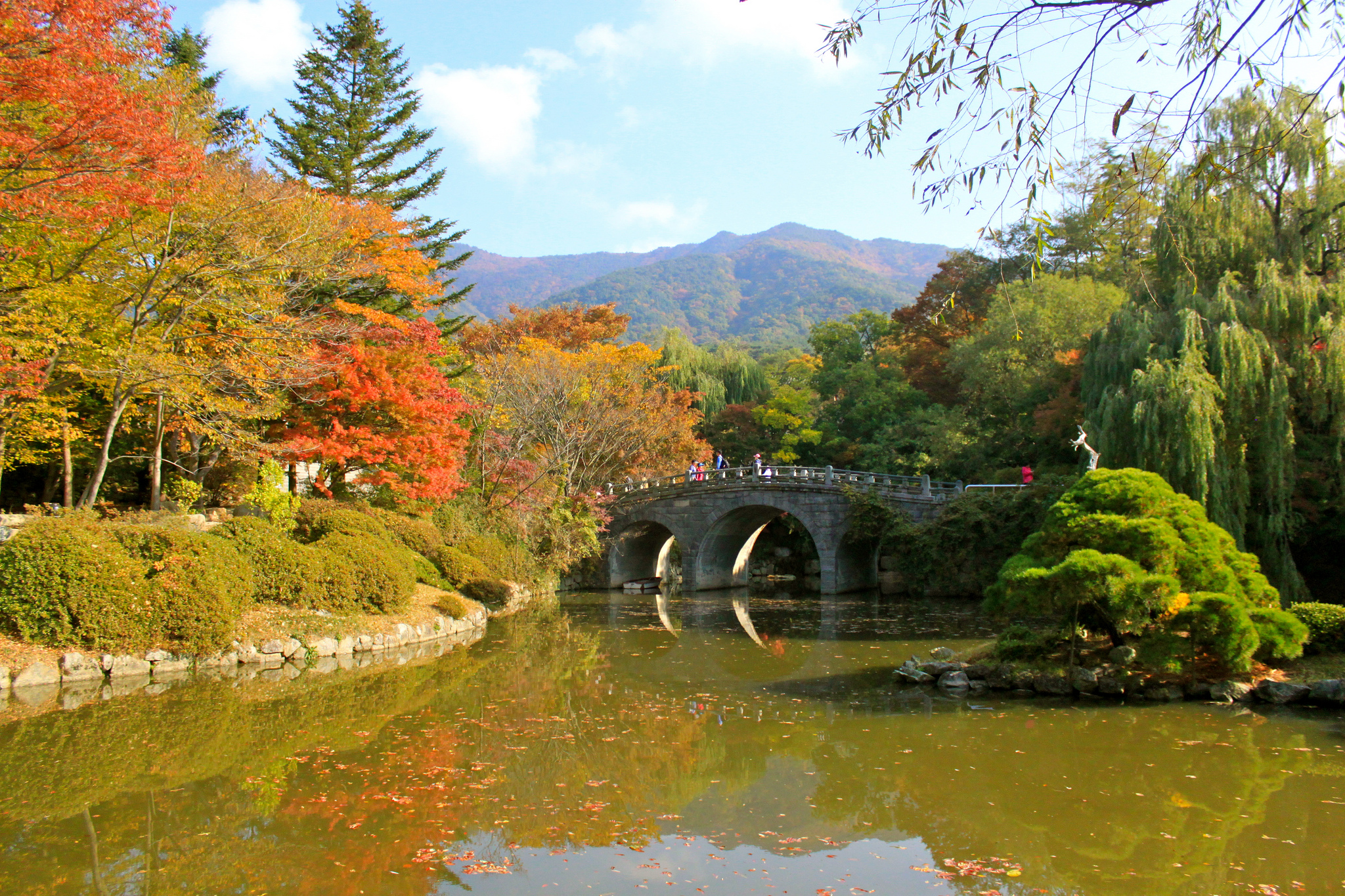
Where to stay Gyeongju Tour Guesthouse. Bike rental available; 3000 KRW for two hours or 5000 KRW for a whole day. Three minutes from Gyeongju train station. Can easily get to the bus station and main tourist sights in downtown area. It is also home to the sweetest and most helpful worker I know at the front desk. Prices depend on the season, but are always reasonable. I paid 17,000 KRW on my first night, and 14,000 KRW on my second. Book in advance though, because it can get very busy on the weekends.
Author Bio : Lily La is a teacher from London, UK. She has lived in Indonesia and South Korea where she taught English, and traveled endlessly. She's currently based in Yangon, Burma, where she teaches English Language and Literature at a British International School. Find her writing on her blog - Away with Lily - or painting, performing poetry, and relaxing with a good book, wherever she is in the world.
( Source : http://www.awaywithlily.com/ )



